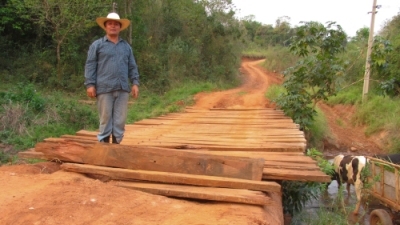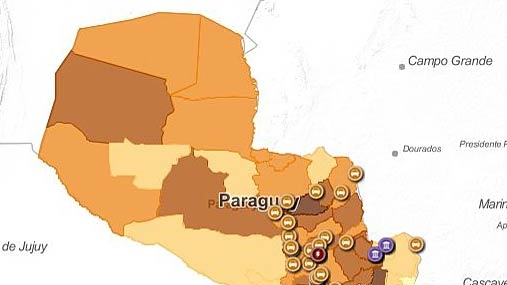Challenge
With rural poverty standing at 45 percent, and with over two thirds of the poor in Paraguay living in rural areas (2010 data), fostering economic inclusion of the rural poor into markets and developing value chains was central to Government’s objective to sustainably reduce extreme poverty.
Solution
This Technical Assistance contributed to addressing this challenge through the following activities:
- The preparation of diagnostics, feasibility studies, and strategic plans for interventions aimed at linking small farmers into three specific value chains – cassava starch, stevia sweetener, and dairy. In that context, a public-private dialogue was conducted with national, regional, local government, producer associations, buyers, and research centers. The participants discussed the validity and relevance of project components and agreed on priorities of action plans to overcome constraints and increase competitiveness in each pilot sector/region. In the case of cassava starch, a pilot intervention was designed and validated, and was ready for implementation.
- Support for the establishment of a multidisciplinary steering committee for inter-institutional policy coordination of interventions aiming at linking small producers to value chains. The committee presided over major decisions regarding sector prioritization, activity definition under the pilot project, and institutionalization of plans.
- Strengthening of analytical capacities of client staff and collaborating agencies. The team engaged staff from line ministries to participate in sub-sector prioritization, feasibility analyses and participatory diagnostics. The approach of “learning by doing” instilled the skills necessary for the staff to undertake similar analyses in the future.
Results
- The pilot intervention for cassava starch is currently being implemented. The Ministry of Agriculture has committed USD $3 million towards financing this pilot project for the next three years, specifically to accompany specialized field extension, extend financial credit to producer groups, develop a network of demonstration farms, and introduce high-yielding plant material. In its pilot stage this intervention is targeting about 3,000 families.
- Strengthened public private dialogue mechanisms for designing and implementing similar interventions in other value chains.
Bank Group Contribution
To design the pilot project, and formulate strategies for Dairy, Stevia Sweetener, Pork, and Poultry, the task had financing of about USD 200,000.
Partners
The key partner was the Ministry of Finance, who provided logistics support and 4 staff to work in the task, for an estimated amount of USD 30,000. Local starch processing firms have agreed to align their own investments in field supervision, land preparation and planning with the execution of the pilot project. The concept of the pilot project was conceived under a public private alliance scheme, making the National Association of Cassava Exporters not only a partner but also a direct stakeholder. Member firms from the association have committed to leverage government expenditures with their own investments in supervision, land preparation and planning. The World Bank attempted collaboration with JICA and CAF.
Moving Forward
Future planned activities include: support the execution of the pilot project to develop cassava starch industry, strengthening the inter-institutional coordination group, and conducting additional analytical diagnostics to develop action plans in other value chains.
Beneficiaries
The task had 2 beneficiary groups: policy makers and practitioners, who will make use of the blueprint to engage with the private sector and implement action plans with a sectoral focus. The pilot project in cassava starch will directly engage 3,000 small producers in its first year of implementation, who will become integrated producers in starch supply chains once scaled. Most of these producers belong to poor households residing in rural areas of Paraguay.


